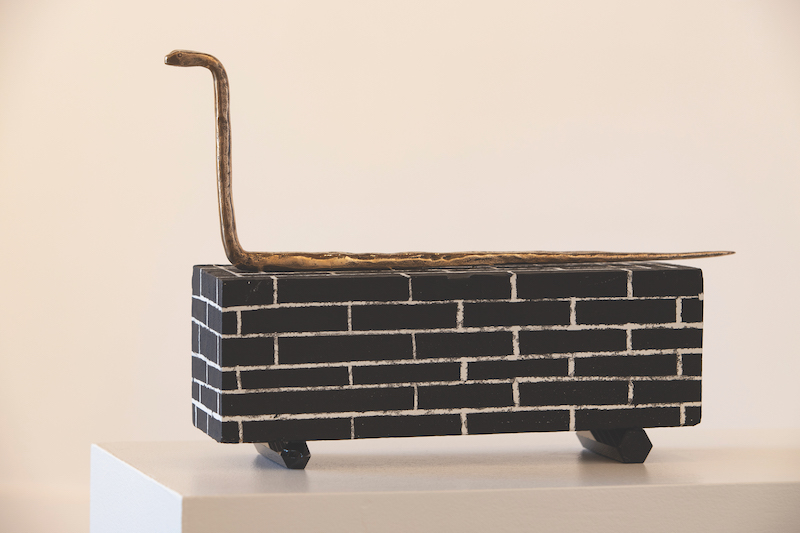Josephine Cachemaille: Family Matters
Josephine Cachemaille’s practice operates in the slippery spaces between reason and magic. Her latest installation takes her daughter as its mystical muse.
Words: Sue Gardiner
“MY ARTWORKS ARE physical manifestations of a collective sense of conjuring,” muses Josephine Cachemaille. “They can act on my behalf when I am not there.” Indeed, this Nelson-based New Zealand artist sees her works as proxies or surrogate objects in non-human form – a “recruited family of art materials” that operate between magic and reason.
The idea that objects are embodied with their own powerful and sustaining energy – with liveliness and a sense of the magical – has informed Cachemaille’s practice for some time. It was strongly felt in a series of recent large-scale installations that use both her own work and that of a public art gallery collection. The 2017 solo US, US, US, at the Suter Te Aratoi o Whakatū in Nelson created one such moment, where works from the established public collection collided and co-existed energetically and theatrically with her own work, and where she embraced the unpredictable results. These kinds of projects have encouraged Cachemaille’s continued use of soft fabrics that offer the possibility to fold around bodies, her use of signs and symbols that trace a history of archetypes and myths, and the further development of the playful installation mode.
The last few years have seen Cachemaille tease out these relationships, and seen her profile grow to include recognition in The Molly Morpeth Canaday Award, The National Contemporary Art Award and The Wallace Art Awards. She is also presenting new work at the forthcoming Beijing Biennale.
After feeling consumed by the conceptual framework of academic study, which she felt obscured other ways of knowing, Cachemaille began instead to trust her materials. It was a defining moment and a real turning point. “I am pleased I ended up even making art at all,” she reflects of that time. It pushed her to test out other ways of doing, to enable the studio to become a productive, even therapeutic space.
But who are the artworks acting for, when the artist is no longer present? In this new body of work shown with Auckland’s Sanderson Contemporary Art at Sydney Contemporary 2019, it is the artists’ daughter, Rosa, who is at the heart of the artist’s thinking. Rosa will soon be of an age when she will leave home and develop her own path, and Josephine is thinking about objects, symbols, stories and instructions she might need with her along the way.
In Power Smock (things she needs) the hanging canvas operates like an activated costume with a large blue pocket ready to carry things Rosa might need on her journey forward – the listening ear of her father, a guiding hand, crystals and sun/moon forms, a sense of direction and strength. The absurdist nature of Dada posters from the 1920s, which feature arrows and pointing hands, are of interest to the artist, as are the colourful capes and masks of Brazilian artists Helio Oiticica and artist/psychotherapist Lygia Clark – works that hold their own sense of consciousness and voice. Shared imagery appears again in Exams, 2019, and this time, Rosa’s feet dance over a brick wall – always moving forward with strength and determination past any obstacle. What parent wouldn’t want this sense of hope and strength for their children?
In some works, a shared love of myth and legend between mother and daughter emerges – Grecian urns with muscly arm handles, a bronze snake or Diana’s Quiver. While Quiver, 2019, alludes to an armoury of protective objects linked to Diana, the goddess of women and childbirth, it also acts like a leaving home duffle bag, stuffed with powerful wishes for the future. “I see the works I am making as companions to this idea of exploring the world,” says the artist. “They all play a part and can activate us to be more alert to the sense-based world – to notice more.”
This article was originally published in Sydney Contemporary Special Edition Art Collector, 2019.











